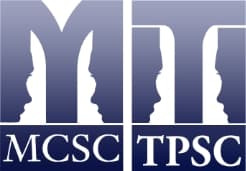Fluctuation in weight, time, Pregnancy, and breastfeeding can take a toll on our breasts. Breasts lose fullness and volume, and often this is accompanied by drooping or sagging.
Minor sagging in small-breasted women who want a modest increase in size may benefit from breast augmentation surgery alone. When there is considerable drooping, placement of breast implants alone would be a mistake. In these cases a breast lift is adviseable to restore the breasts to a higher, more aesthetic position on the chest wall. Breast lift surgery involves the removal of excess loose skin, especially above the areola, and the areola and nipple are repositioned.
You may read a lot of advertising for so called “scarless” breast lifts. In reality, this does not exist. It is possible, in cases where drooping is minimal, to lift the breast with a periareolar scar – this is also called a “donut lift”. This involves an incision around the areola only, thus the scar may be barely visible. However, it is important for Mississauga and Toronto breast lift patients to appreciate that only a couple of centimeters of lift can be achieved by this method. The risk of complications rises when attempts are made to achieve a larger degree of lift through this type of incision technique.
The degree of lift in breast lift surgery generally correlates with the size of the incision: The larger the scar, the more the lift. “Compromising on the degree of lift and the shape of the breast by insisting on a small incision is a mistake” says Toronto Plastic Surgeon Dr. Weinberg.
The “anchor” type incision was the classic breast lift incision traditionally used for breast lifts. This went around the areola, vertically downward and then horizontally in the fold beneath the breast. This technique has now been modified. Most women now get their breast lift with a “lollipop” incision, which allows for adequate lifting with an incision that runs around the areola and then vertically downward. Dr. Weinberg uses modern suturing techniques and post-procedure care to minimize the appearance of the scars, such that many patients eventually wind up with a thin and barely visible, white line.
With any of the incisions mentioned above, patients can and often do also have breast implants. In general, very large implants are not advisable with breast lifts, as the rate of complications,such as compromising the blood supply to the nipple, rises with large implants. Large implants can also increase future drooping, necessitating repeat surgery. Decisions need to be made about the placement of the breast implants. Toronto and Mississauga breast surgery patients need to discuss their goals with Dr. Weinberg, who will take many factors into account when recommending which incision, type of implant, and implant placement would be best.
INSPIRA® breast implants, which are now available in Canada offer new options for women who are undergoing breast lifts and breast implant revision surgeries. The cohesiveness of the INSPIRA implants and the degree of filling may reduce the chances of rippling, thereby allowing placement of the breast implant above the chest wall muscle in more cases.
Experience with these implants in other countries suggests a reasonably low rate of capsular contracture, which may make them an attractive choice for women undergoing breast implant revision surgery.
An increased number of patients have been considering revision surgery recently because of the PIP implant scare. PIP implants were French breast implants that were recenlty revealed to be made with industrial-grade silicone. Dr. Weinberg is happy to assure his Mississauga and Toronto patients that PIP implants were never used in Canada, but some women who had their breast surgeries in other countries are opting to have PIP implants removed and replaced.
If you would like more information on breast lifts, or if you would like to book a consultation, contact Dr. Michael Weinberg, expert in plastic surgery Toronto number
(416) 207-9090, mississauga number
(905) 273-3045.


Leave a Reply